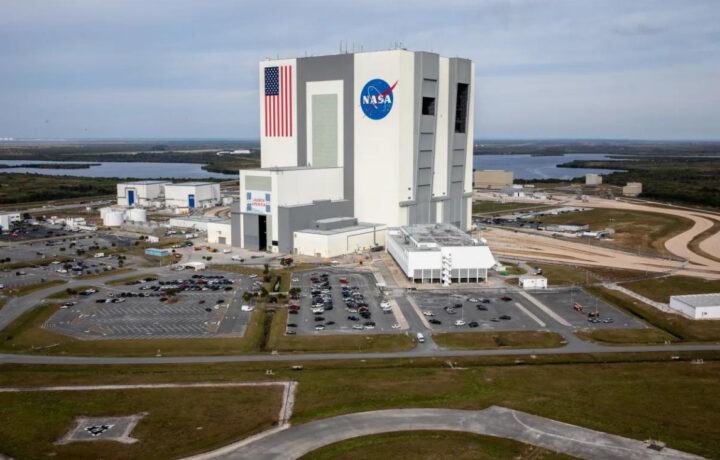Space Systems Command (SSC) and SpaceX successfully launched the U.S. Space Force (USSF)-52 mission using a SpaceX Falcon Heavy rocket from Launch Complex (LC)-39A at NASA’s Kennedy Space Center in Florida.
The Falcon Heavy carried the X-37B Orbital Test Vehicle on its seventh mission into orbit. The OTV is part of an experimental test program to demonstrate technologies for a reliable, reusable, unmanned space test platform for the United States Air Force. The mission began just over 13 months after the robotic-controlled, Boeing-built X-37B touched down at KSC after spending a record 908 days in orbit, four months longer than any previous X-37B flight.
“The technological advancements we’re driving on X-37B will benefit the broader space community, especially as we see increased interest in space sustainability,” said Michelle Parker, vice president of space mission systems for Boeing Defense, Space & Security, in a statement. “We are pushing innovation and capability that will influence the next generation of spacecraft.”
The seventh launch had been delayed multiple times due to weather and technical difficulties, but the reusable spacecraft is now in orbit.
“This was a very important mission and our teams worked shoulder-to-shoulder to ensure a successful launch,” said Brig. Gen. Kristin Panzenhagen, program executive officer for Assured Access to Space and commander of Space Launch Delta 45. “Our national security space missions are the most stressing within our launch portfolio, and we have multiple worldclass organizations that come together to make the magic happen. We’re having a great year, doing what we love to do putting capabilities into space to deter and, if necessary, respond to threats to our nation and its allies.”
Crowded Space?
The launch of the X-37B was less than two weeks after China launched its reusable Shenlong (“Divine Dragon”) space plane.
This is the Chinese craft’s third mission, and it reportedly placed six objects in orbit – and those objects have been tracked by amateur astronomers who claim that they’re emitting signals reminiscent of those emitted by objects that China’s space plane has released on previous missions.
Beijing has not announced what the objects may be, and to date has released almost no photos of the Shenlong.
Secret Mission for the X-37B – Straight to Moon or Infinity and Beyond
Though SSC has been a bit more forthcoming about the X-37B, few details have been revealed about the Boeing-built spacecraft’s exact purpose, payload, or final destination during its seventh mission.
It has been reported by several news outlets, including Flying magazine, that the most recent launch had “more juice than any other,” which has led to speculation that the OTV could be sent to deep orbit, or perhaps even to the neighborhood of the moon.
While the first five missions employed Atlas V rockets made by United Launch Alliance, a joint venture between Boeing and Lockheed Martin, the sixth mission flew on SpaceX’s Falcon 9 booster. Each trip was confined to below 1,200 miles in altitude.
However, for the first time, the reusable, autonomous OTV was launched via a SpaceX Falcon Heavy rocket, which is reported to be one of the most powerful launch vehicles in existence. Falcon Heavy – which has three first-stage boosters that are also reusable – can reach 22,000 miles.
Space Force did not disclose the spaceplane’s flight plan, while SpaceX also shut down its livestream of the launch at the request of the Space Force once X-37B reached orbit.
History of the X-37B – The Successor to the Space Shuttle
The X-37B program was developed as part of a partnership between the U.S Department of the Air Force Rapid Capabilities Office and the U.S. Space Force. Aerospace giant Boeing designed and manufactured the spaceplane and it continues to provide program management, engineering, test and mission support from sites in Southern California, Florida and Virginia.
In 2020, the X-37B received the Robert J. Collier Trophy for advancing the performance, efficiency and safety of air and space vehicles.
The X-37B resembles NASA’s now-retired space shuttle. However, it is significantly smaller, measuring just 29 feet (8.8 meters) from nose to tail, while the space shuttle was 122 feet (37 m) long. While the space shuttle was piloted, the X-37B is autonomous.
The U.S. Space Force is believed to own at least two X-37B vehicles, both of which were produced by Boeing. To date, the pair craft has flown six orbital missions, each of which is known by the signifier OTV (“Orbital Test Vehicle”):
- OTV-1: Launched on April 22, 2010 and landed on Dec. 3, 2010 (duration 224 days).
- OTV-2: March 5, 2011 to June 16, 2012 (468 days).
- OTV-3: Dec. 11, 2012 to Oct. 17, 2014 (674 days).
- OTV-4: May 20, 2015 to May 7, 2015 (718 days).
- OTV-5: Sept. 7, 2017 to Oct. 27, 2019 (780 days).
- OTV-6: May 17, 2020 to Nov. 12, 2022 (908 days).
NASA’s original X-37 program began in 1999 and was transferred to DARPA in 2004. It is now under the domain of the United States Space Force’s Delta 9, which was established and activated on July 24, 2020.
Where OTV-7 is headed isn’t known, but it is on track to set another record, it won’t be back on Earth until at least the middle of June 2026!




